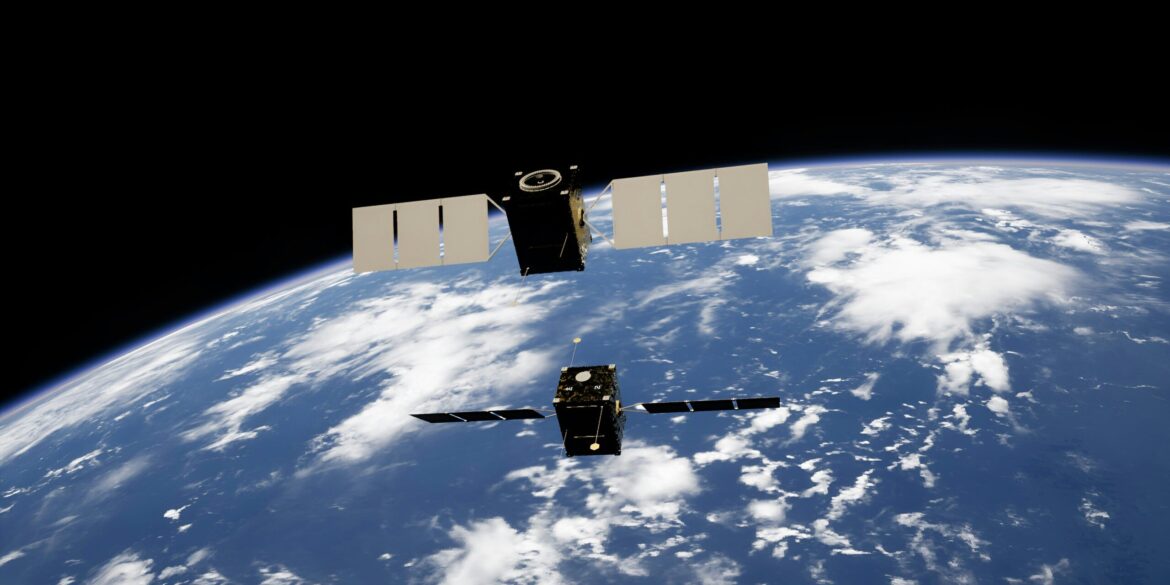In a significant advancement for Earth and space science, NASA has launched three state-of-the-art satellites aboard a Falcon 9 rocket to deepen our understanding of space weather and its effects on Earth and future space exploration. The successful deployment marks a pivotal moment for both scientific research and the ongoing effort to safeguard infrastructure and human activity from solar disruptions.
The three-payload mission includes NASA’s Interstellar Mapping and Acceleration Probe (IMAP), the Carruthers Geocorona Observatory (CGO), and the National Oceanic and Atmospheric Administration’s Space Weather Follow-On L1 (SWFO-L1) satellite. Each of these spacecraft is tailored to study a different facet of the Sun-Earth environment, and together, they promise to form an integrated space weather monitoring system with broad applications for Earth-based and space-bound systems alike.
The IMAP mission, developed by NASA’s heliophysics division, will focus on charting how solar wind particles interact with interstellar matter near the boundaries of our solar system. Stationed approximately 1 million miles from Earth at the Lagrange Point 1 (L1), IMAP is expected to provide new insights into the structure of the heliosphere — the vast, protective bubble formed by the Sun’s magnetic field that shields the solar system from cosmic radiation. Scientists anticipate that IMAP’s data will significantly enhance models of solar wind behavior and the impact of galactic cosmic rays on planetary atmospheres.
Read Also: https://goodmorningus.com/nasa-and-isro-launch-nisar-satellite-to-monitor-earths-surface-changes/
Meanwhile, the Carruthers Geocorona Observatory, named in honor of pioneering African American astrophysicist George Carruthers, will offer the most detailed study yet of Earth’s geocorona — the outermost layer of the atmosphere composed primarily of hydrogen. Operating in ultraviolet wavelengths, CGO aims to deepen our understanding of atmospheric escape, a process by which hydrogen gradually leaks into space. These findings are essential not just for planetary science but also for interpreting data from exoplanets with similar atmospheric compositions.
The third component of the mission, NOAA’s SWFO-L1 satellite, will serve as a frontline early-warning system for solar storms. From its vantage point at L1, SWFO-L1 will monitor charged particle emissions from the Sun, including coronal mass ejections (CMEs) and high-energy solar wind streams that can impact Earth’s magnetosphere. When solar storms strike, they have the potential to disrupt satellites, GPS navigation, aviation communications, and even electrical power grids. By issuing timely alerts, SWFO-L1 will allow utilities, aviation agencies, and satellite operators to take protective measures during geomagnetic events.
NASA emphasized that this multi-satellite deployment is not only a scientific milestone but a strategic investment in national and planetary resilience. “These missions enhance our capacity to monitor the space environment in real time and offer a better understanding of how solar activity affects our technological systems,” said Nicola Fox, associate administrator of NASA’s Science Mission Directorate. She added that the data will be instrumental in designing safer missions for astronauts traveling to the Moon and Mars, where space weather poses a serious risk due to the absence of Earth’s magnetic shield.
Space weather has become an increasingly important area of study as society’s reliance on satellites, space-based communications, and advanced navigation systems continues to grow. A major geomagnetic storm, such as the Carrington Event of 1859, could today cause widespread technological disruption. Thus, the ability to predict and prepare for solar activity is now seen as essential to modern infrastructure protection and national security.
The collaborative nature of the mission, bringing together NASA, NOAA, and academic partners, underscores the importance of coordinated efforts in space science. It also aligns with broader U.S. goals of maintaining space leadership while building resilience to emerging risks. Each satellite represents years of engineering, testing, and mission planning, and together they embody the cutting-edge of American space capabilities.
Moreover, the launch highlights the continued partnership between NASA and commercial spaceflight, with SpaceX’s Falcon 9 rocket once again serving as a reliable vehicle for delivering critical payloads to space. The growing role of private sector launch providers has enabled more frequent and cost-effective access to orbit, accelerating progress in scientific discovery and Earth observation.
In addition to scientific and operational benefits, the missions carry symbolic weight. The naming of the Carruthers Geocorona Observatory honors the legacy of a scientist whose innovations in ultraviolet astronomy helped lay the groundwork for space-based observatories. His contributions to our understanding of Earth’s upper atmosphere continue to resonate in today’s generation of astrophysicists and engineers.
As the trio of satellites begins their respective missions, scientists around the world are preparing to receive a stream of unprecedented data. With improved observational capability at L1 and enhanced coordination between science and operations teams, this launch may prove to be a cornerstone in the next era of space weather forecasting and heliophysics research.

